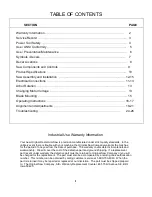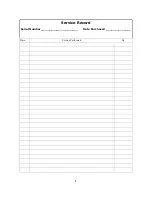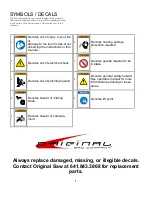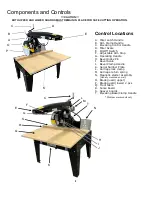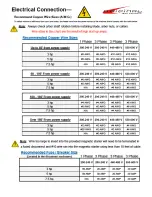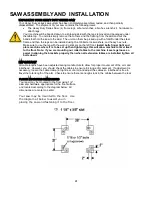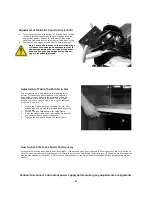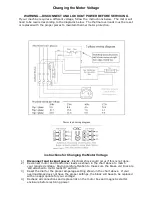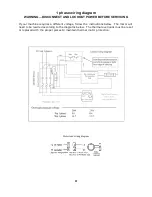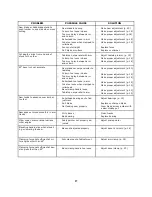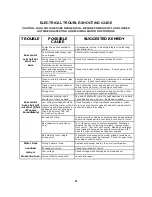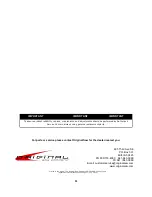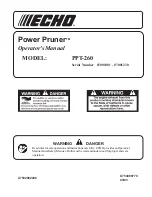
14
14
General Safety Precautions
1.
Be sure the blade rotates clockwise when facing the saw from the left side. Blade must rotate to the front of the saw.
2.
Be sure all clamp handles are tight before turning on motor.
3.
Keep the blade sharp and properly set.
4.
Hold or clamp the material firmly against the guide strip when cutting.
5.
Be sure the blade and arbor collars are clean and the recessed side of the collars are against blade.
6.
Never oil or grease arm tracks or motor.
7.
Do not start machine without proper tool guard.
8.
Do not remove the anti
-
kickback device from the blade guard. Adjust it to just clear the work.
9.
Keep motor air slots clean.
10.
Return roller head to full rear after each operation.
General Cautions When Using the Lower Blade Guard:
1.
Used properly the lower blade guard is designed to provide protection from contact with the side of the blade. It is not
designed to prevent contact with the front or rear of the blade. When the lower guard contacts the fence or material
being cut it will rise up and expose the blade. Be careful to keep your hands out of the line of the cut.
2.
Lower blade guards may become caught in prior kerfs in the fence or table. Alleviate this by replacing the guide fence
frequently. Always stop the saw before attempting to remove a guard that is stuck in a kerf.
3.
Short cut
-
off pieces of wood may become caught between the lower guard and the blade. If this happens shut off the
saw and wait until blade stops to remove the piece.
4.
The lower blade guard
’
s effectiveness is limited in bevel operations. It may have to be raised out of the way when set-
ting the bevel angle.
Be sure the power is off/locked out and blade is completely stopped before making any
adjustment
.
5.
Catching the lower guard in saw kerfs when changing the saw setup can be avoided by elevating the saw until the bot-
tom of the guard clears the fence.
6.
Do not use the lower guard with any accessory other than the correct size blade.
Using the Adjustable Arm Stop
The arm stop should be used whenever roller head travel needs to be limited, such as when repetitive cross cuts are being
made. Use of the arm stop will also prevent the blade from throwing small cut off pieces on the return stroke.
Do not ad-
just the arm stop unless the power is off and locked out and the blade stopped. The arm stop must be used on
the right side of the arm.
Proper adjustment of the arm stop is completed as follows:
1.
Pull the roller head forward far enough for the blade to sever the material and travel
1/4”
past the material.
2.
Lock the roller head to the arm with the riplock and place the arm stop so it is touching the roller head.
3.
Loosen the riplock and return the roller head behind the fence.
Alternate Fence Board Positions
Your saw was assembled with the fence board in the
most frequently used position on the work table (see
figure 3). The fence board may be moved to alternate
positions to accommodate varying uses. Moving the
fence board behind the spacer board will allow for
maximum cross cutting capabilities. Moving the fence
board back to the rear board will provide for maxi-
mum ripping capability.
Figure 3
SAW ASSEMBLY AND INSTALLATION
…
continued
Содержание 3531-01
Страница 11: ...11 11...


